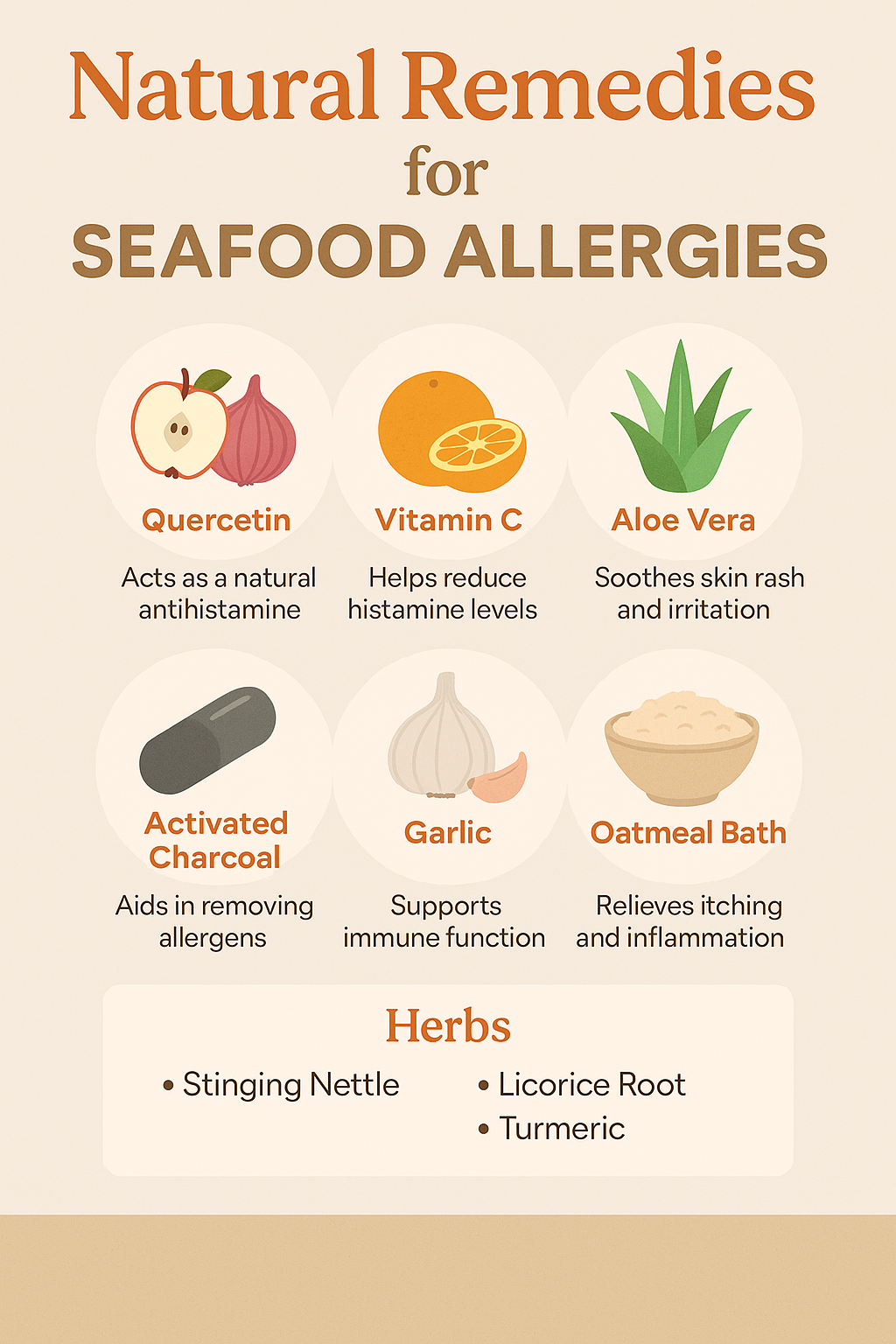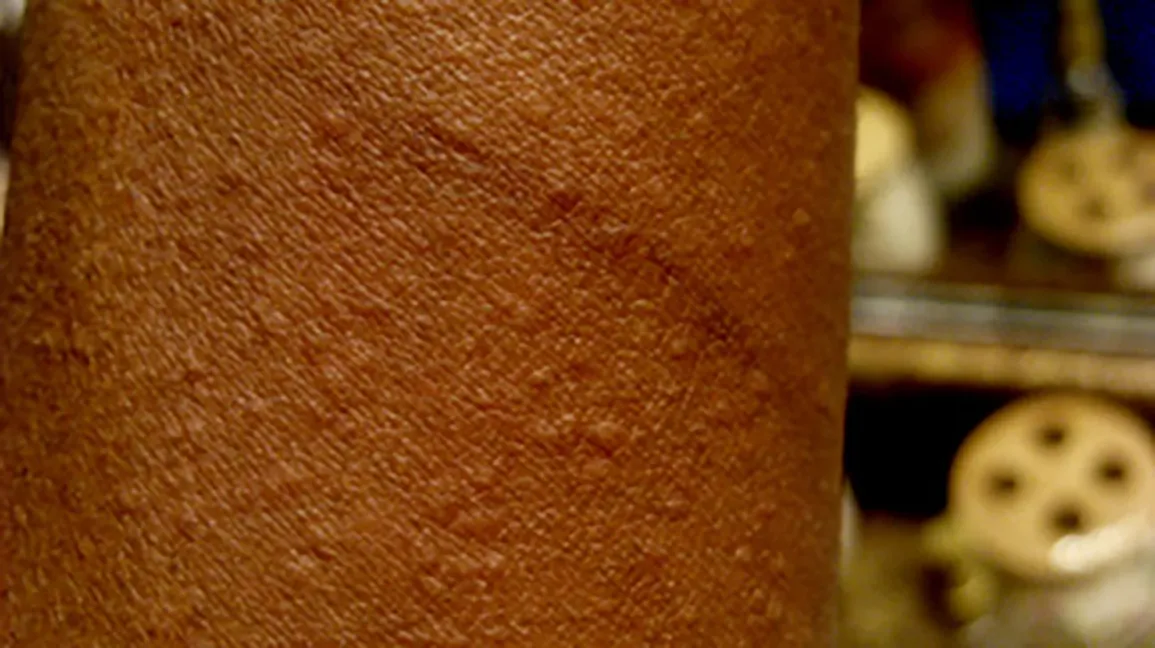
Seafood Allergies: Last Friday, my Joanie and I went to Red Lobster for dinner. I ordered the Salmon New Orleans, a dish I’ve enjoyed many times. Red Lobster always nails the salmon—cooked to perfection, just the way I like it: well-done.
Now, I’m not big on shrimp. I usually pass them off to Joanie. But this time, I did eat just one. That one shrimp might’ve been all it took along with the sauce it was cooked in. The next morning, I woke up with an itchy, red skin rash.
Could it have been a seafood allergy rash? I’ve never had this happen before. Also, I heard the second time is even worst. From what I have researched that’s the thing about shellfish or seafood allergies—they can develop later in life and show up suddenly.
Let me know if you’ve experienced something similar. This guide will walk you through natural remedies, how to spot symptoms, and how to soothe your skin and immune system the holistic way. This is no way medical advice from me, just information to use on if you prefer at your own risk.
What Are Seafood Allergies?
🐟 Seafood Allergy Defined
A seafood allergy is a hypersensitive reaction by your immune system to proteins found in certain fish or shellfish. Common culprits include:
- Shrimp
- Crab
- Lobster
- Clams
- Salmon
- Tuna
Seafood allergies are among the most common food allergies in adults, often triggered without warning.
Common Symptoms of Seafood Allergies
Seafood allergies can present a variety of symptoms that range from mild to life-threatening.
⚠️ Mild Symptoms Include:
- Itchy skin or seafood allergy rash
- Hives or eczema
- Swelling of the lips, face, or throat
- Nasal congestion or sneezing
- Digestive upset: nausea, cramps, or diarrhea
🚨 Severe Reactions May Include:
- Difficulty breathing
- Dizziness or fainting
- Anaphylaxis (requires emergency attention)
If you’ve never had these symptoms before, even a mild rash should be taken seriously. Your body might be sending an early warning sign.
Why Do Seafood Allergies Suddenly Appear?
Food allergies, especially seafood-related ones, can develop later in life. Even if you’ve eaten seafood without issue before. Triggers may include:
- Changes in gut microbiome
- Chronic inflammation or stress
- Immune system disorders
- Cumulative exposure to allergens
In short, your body can change. So can your immune response.

Natural Remedies for Seafood Allergies
This is if you’ve had a reaction but aren’t in emergency territory. There are natural ways to reduce allergic symptoms. And, still support your immune response.
🌿 1. Quercetin: The Natural Antihistamine for Seafood Allergies
Quercetin is a plant pigment found in apples, onions, and berries. It stabilizes mast cells (the ones that release histamine), which can help reduce your body’s allergic response.
How to use:
- Eat foods high in quercetin
- Take quercetin supplements (500 mg, 2x per day)
🌱 2. Vitamin C for Histamine Control
Vitamin C works as an antihistamine and anti-inflammatory. It’s excellent for reducing skin rash and supporting detox pathways.
How to use:
- 1000–2000 mg daily in divided doses
- Include citrus, bell peppers, and strawberries in your diet
💧 3. Aloe Vera for Seafood Allergies Rash Relief
Aloe vera is soothing and cooling for itchy, irritated skin. It also has anti-inflammatory properties.
How to use:
- Apply pure aloe vera gel directly to affected skin
- Avoid store-bought brands with added fragrance
🧘 4. Activated Charcoal for Immediate Detox
Activated charcoal binds to toxins and allergens in the gut before they can be absorbed into the bloodstream.
How to use:
- Take one 500 mg capsule with water immediately after exposure
- Use short-term only, not daily
🧄 5. Garlic for Immune Strengthening
Garlic boosts immunity and fights inflammation, which may calm allergic reactions over time.
How to use:
- Eat 1–2 raw cloves daily
- Add to meals or mix with honey
🌸 6. Oatmeal Bath to Calm Skin Irritation
An oatmeal bath is a gentle and effective remedy for calming seafood allergy rashes.
How to use:
- Add 1 cup of colloidal oatmeal to a warm (not hot) bath
- Soak for 15–20 minutes
- Pat skin dry, don’t rub
Herbal Support for Seafood Allergy Symptoms
In addition to foods and vitamins, several herbs are known to reduce histamine levels and balance immune function:
🌿 Stinging Nettle
Known as a natural antihistamine, stinging nettle can block histamine receptors and prevent allergic flare-ups.
Dosage:
300–600 mg dried nettle leaf extract, up to 3x/day
🌿 Licorice Root
It reduces inflammation and supports adrenal glands, which play a role in allergy response.
Note: Avoid licorice root if you have high blood pressure.
🌿 Turmeric (Curcumin)
Curcumin is the active compound in turmeric and has powerful anti-inflammatory properties.
How to use:
Take with black pepper for increased absorption. Use turmeric teas, capsules, or add it to meals.
Detoxifying After a Seafood Reaction
Even if you’ve already had a reaction, your body can benefit from a mini-detox. These natural practices help clear out allergens:
- ✅ Drink More Water
- Flush toxins and support your kidneys and lymphatic system.
- ✅ Eat Detoxifying Foods
- Focus on leafy greens, beets, lemons, and parsley. These help your liver and kidneys process allergens more efficiently.
- ✅ Eliminate Other Allergens Temporarily
Remove dairy, wheat, and processed sugar for 5–7 days to give your body a break.
When to See a Doctor
Natural remedies are helpful for mild seafood allergy symptoms, but medical advice is essential if:
- Your rash spreads or worsens
- You experience swelling in your face or throat
- You feel dizzy or short of breath
If this is your first reaction, get an allergy test. You might be allergic to one specific seafood (like shrimp) and not others.
Can You Prevent Seafood Allergies Naturally?
There’s no guaranteed prevention, but you can reduce your risk of flare-ups through:
- Gut health support (probiotics, fermented foods)
- Anti-inflammatory diet (less sugar, more omega-3s)
- Regular detox routines
- Managing stress
Long-term strategies like these can help calm your immune system and lower your chances of future reactions.
Final Thoughts: Listen to Your Body
What happened after I ate that one shrimp may have been random—or it could be a wake-up call. The body speaks in subtle ways. That seafood allergy rash might have been my body’s way of saying, “Pay attention.”
If you’ve experienced something similar, try these natural approaches. But don’t skip a medical check-up either. Sometimes, a single reaction is all it takes to understand that your body is asking for something different.
In the meantime, there’s no harm in giving your skin and immune system a little love, the natural way. Shellfish Allergy | Causes, Symptoms & Treatment:

More Articles









